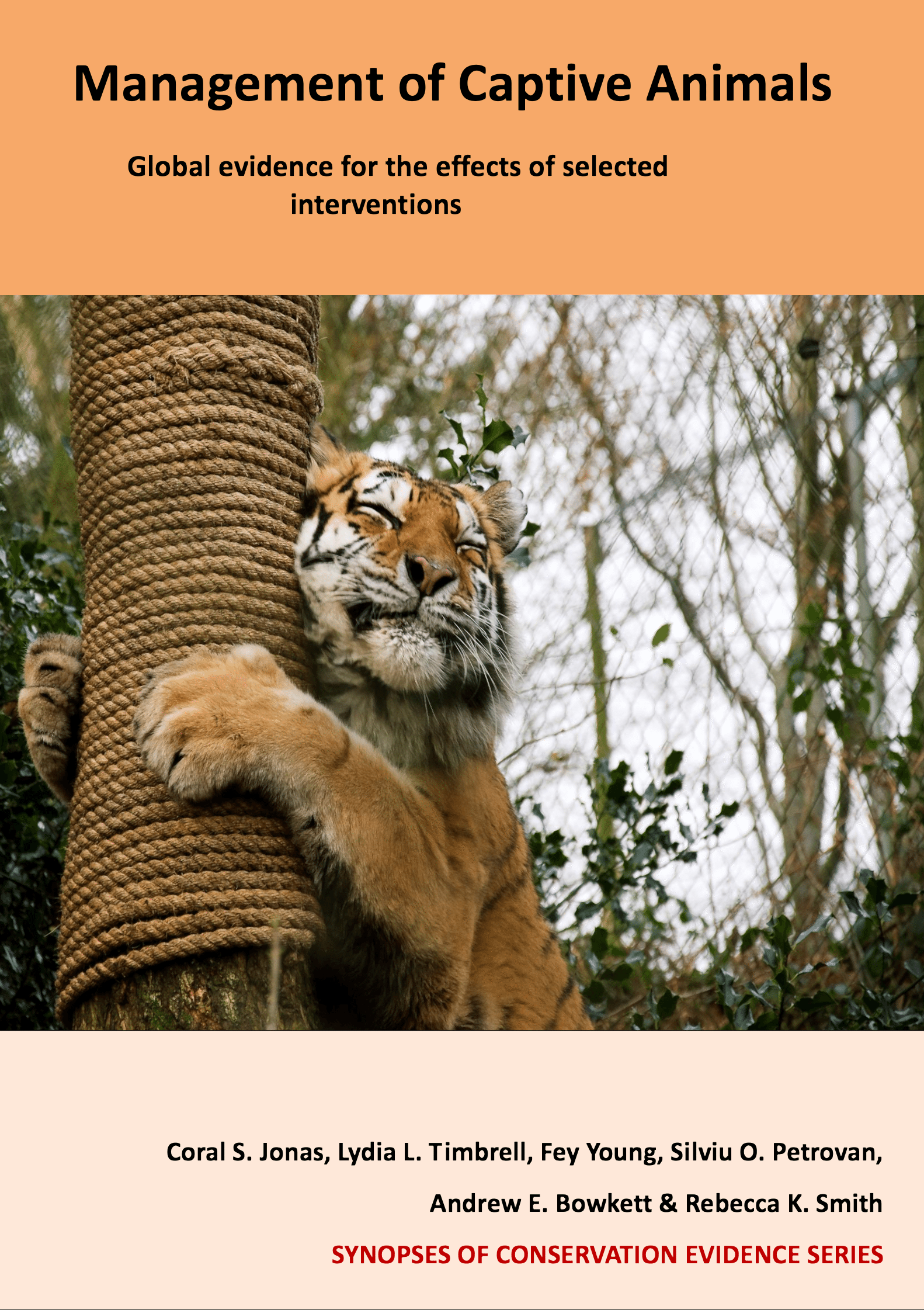Amphibians: Vary artificial rainfall to simulate seasonal changes in the wild
Overall effectiveness category Unknown effectiveness (limited evidence)
Number of studies: 2
View assessment score
Hide assessment score
How is the evidence assessed?
Effectiveness
78%Certainty
33%Harms
0%
Study locations
Supporting evidence from individual studies
A replicated, before-and-after study in 2008–2011 in Cologne, Germany found that egg deposition of harlequin toads Atelopus flavescens was stimulated by intensive rainfall following a dry period, whereas none had occurred previously. However, no offspring survived past 142 days. The first three breeding trials with no wet or dry seasons resulted in no egg production. Once a wet and dry season was simulated, two clutches of eggs were produced with 400–500 eggs (5–10% unfertilized). On day 43 after egg deposition, only two larvae survived. One tadpole survived to day 112, the other died as a toadlet at day 142. Males were housed in three groups of 12–15 in tanks (100 x 60 x 60 cm) with artificial streams. Four females were transferred to the tanks for breeding. Tanks were misted several times each day. A dry season with reduced water and misting was then simulated for three months followed by a wet season with increased rainfall using an artificial rain system.
Study and other actions testedA before-and-after study in 2010-2012 in Vienna, Austria found that captive Staurois parvus and Staurois guttatus started breeding when wet and dry seasons were simulated, and frogs were moved to a larger enclosure with more calling, perching and laying sites, although no statistical tests were carried out. Neither species had bred successfully in captivity before 2011. Once the animals were moved to two breeding enclosures with simulated wet and dry seasons and with more calling perching and laying sites in August 2011, S. parvis tadpoles were observed from October 2011 and S. guttatus tadpoles from March 2012. By 2012, a total of 285 S. parvis froglets, 600 tadpoles and 180 juveniles had been raised and 76 S. guttatus tadpoles had been raised. In August 2011, five pairs of each species were moved from a medium-sized (50 × 60 × 70 cm) terraria with tree branches, plants and stones and no simulated wet and dry seasons, to two larger (150 × 120 × 100 cm) enclosures with controllable waterfalls, plants, small burrows, ledges for calling sites and perching sites. The waterfall for S. guttatus also had several tree branches. Each enclosure had a simulated 14 day dry period, followed by a 14 day simulated rainy season (4 hours daily rainfall) with the temperature in both enclosures at 22-27°C.
Study and other actions tested
Where has this evidence come from?
List of journals searched by synopsis
All the journals searched for all synopses
This Action forms part of the Action Synopsis:
Management of Captive Animals
Management of Captive Animals - Published 2018
Captive Animal Synopsis




















